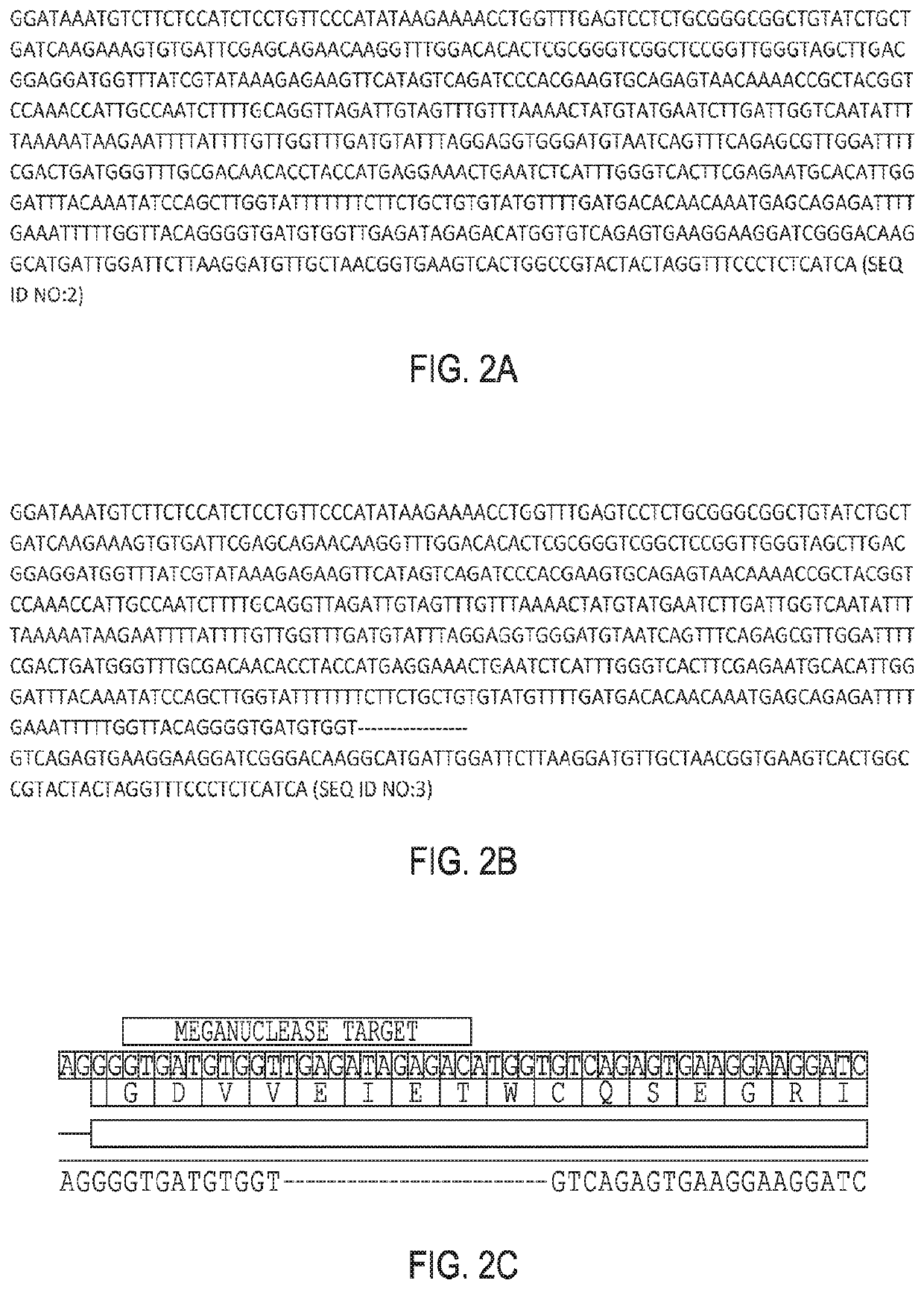Engineered nucleases to generate deletion mutants in plants
a technology of deletion mutants and nucleases, applied in genetic engineering, recombinant dna-technology, biochemistry apparatus and processes, etc., can solve problems such as random, multiple and unspecific genetic changes
- Summary
- Abstract
- Description
- Claims
- Application Information
AI Technical Summary
Benefits of technology
Problems solved by technology
Method used
Image
Examples
example 1
Mutation of FatA1 with Use of a Meganuclease
[0074]Using a meganuclease specific for FatA1 (the expression of the desired meganuclease in a canola plant cell causes specific breaks in FatA1 DNA in the plant genome; repair of which leads to deletions, insertions and / or base pair changes), several canola plants with deletions in Fat1A were generated (ranging from 1 to 350 base pair deletions). This resulted in phenotypes with a decrease in C18:0 saturated fat production from about 7% to about 38%, with a reduction in combined C18:0 / C20:0 / C22:0 / C24:0 from about 6% to about 33%, as compared to plants with an identical genetic background to the plant prior to exposure to an engineered nuclease.
[0075]Thus targeted mutation of Fat1A resulted in a significant and unexpected decrease in saturated fat production.
example 2
FatA1 Mutation and Analysis
[0076]In the Tables provided below, the fatty acids are referred to by the length of the carbon chain and number of double bonds within the chain. For example, C14:0 refers to myristic acid; C16:0 refers to palmitic acid; C18:0 refers to stearic acid; C18:1 refers to oleic acid; C18:2 refers to linoleic acid; C18:3 refers to ALA; C20:0 refers to archidic acid; C20:1 refers to eicosenoic acid; C22:0 refers to behenic acid; C22:1 refers to erucic acid; C24:0 refers to lignoceric acid; and C24:1 refers to nervonic acid. “Total Sats” refers to the total of C14:0, C16:0, C18:0, C20:0, C22:0, and C24:0. Representative fatty acid profiles are provided for each of the specified samples.
[0077]Unless otherwise indicated, all percentages refer to fatty acid % based on total fatty acids (i.e., fatty acid moieties) in the oil.
[0078]Brassica plants with lower saturated fatty acid were obtained by subjecting cells of Brassica plants to engineered meganucleases, followed ...
PUM
| Property | Measurement | Unit |
|---|---|---|
| length | aaaaa | aaaaa |
| full-length | aaaaa | aaaaa |
| distance | aaaaa | aaaaa |
Abstract
Description
Claims
Application Information
 Login to View More
Login to View More - R&D
- Intellectual Property
- Life Sciences
- Materials
- Tech Scout
- Unparalleled Data Quality
- Higher Quality Content
- 60% Fewer Hallucinations
Browse by: Latest US Patents, China's latest patents, Technical Efficacy Thesaurus, Application Domain, Technology Topic, Popular Technical Reports.
© 2025 PatSnap. All rights reserved.Legal|Privacy policy|Modern Slavery Act Transparency Statement|Sitemap|About US| Contact US: help@patsnap.com



